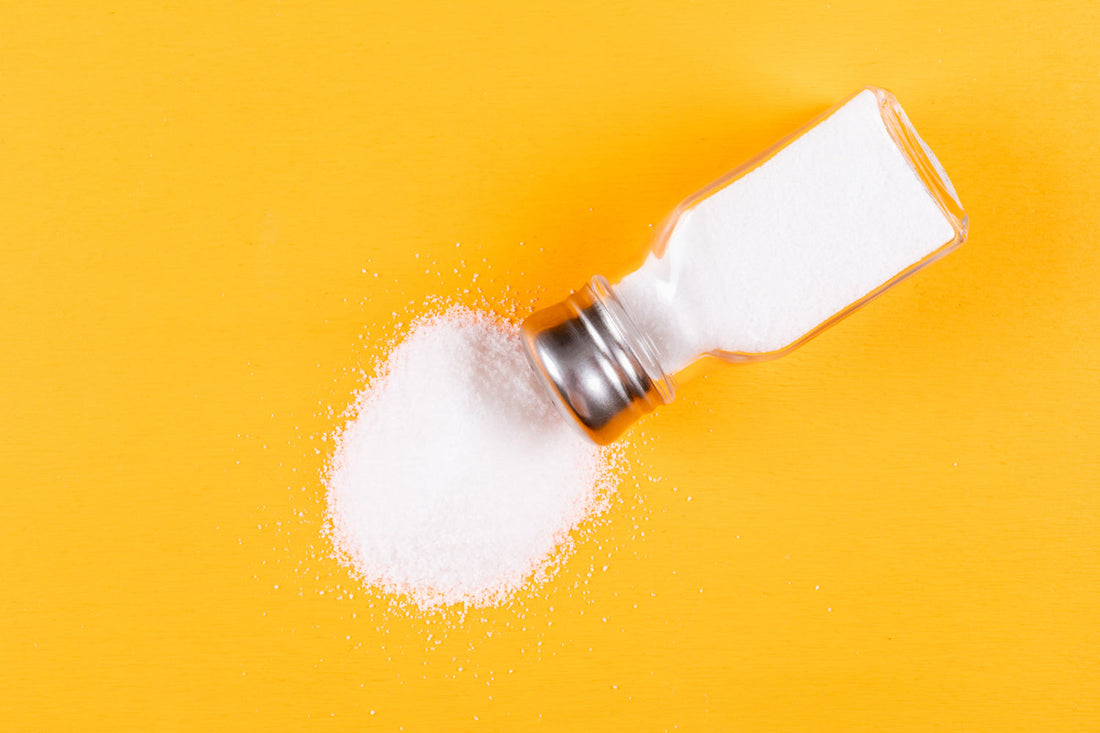Salt, or sodium chloride, is an essential mineral that plays a vital role in many bodily functions, such as nerve transmission, muscle contraction, and fluid balance. However, most people consume more salt than they need, which can lead to health problems such as high blood pressure, heart disease, and kidney damage. So, is it a good idea to eat salt before an intense workout? The answer is: that it depends.
The benefits of salt as a pre-workout
Eating salt before an intense workout can have some benefits, especially for athletes who sweat a lot and lose electrolytes. Electrolytes are minerals that help regulate the electrical activity of cells and maintain fluid balance in the body. Sodium is one of the most important electrolytes, as it helps retain water in the blood and tissues and prevent dehydration. Dehydration can impair performance and cause fatigue, headache, nausea, and muscle cramping.
By consuming salt before a workout, you can increase your blood volume, which can improve your hydration status and increase blood flow to the muscles and organs. This can enhance oxygen delivery, nutrient transport, and waste removal, and ultimately boost your endurance and stamina. Salt can also prevent or reduce muscle cramping, which is often caused by low sodium levels in the blood or muscles.
Some studies have shown that eating salt before a workout can improve performance and reduce perceived exertion. For example, a study by Sims et al. (2007) found that cyclists who consumed a high-salt meal (4 g of sodium) before a 2-hour time trial performed better and reported lower ratings of perceived exertion than those who consumed a low-salt meal (0.5 g of sodium). Another study by Baker et al. (2015) found that runners who consumed a salt capsule (1.8 g of sodium) before a half-marathon ran faster and had lower heart rates than those who consumed a placebo.
The risks of salt as a pre-workout
However, eating salt before a workout is not without risks, and it may not be beneficial for everyone. Eating too much salt can cause adverse effects, such as increased blood pressure, water retention, bloating, and thirst. High blood pressure can increase the risk of cardiovascular diseases, such as stroke and heart attack. Water retention can cause swelling, weight gain, and discomfort. Bloating can impair digestion and cause abdominal pain, gas, and nausea. Thirst can make you drink more water than you need, which can dilute your electrolytes and cause hyponatremia, a condition where the sodium level in the blood is too low. Hyponatremia can cause symptoms such as confusion, drowsiness, seizures, and coma.
Eating salt before a workout may not be necessary or beneficial for people who do not sweat a lot, who have a high salt intake in their regular diet, or who have a medical condition that requires a low-sodium diet, such as hypertension, kidney disease, or heart failure. Eating salt before a workout may also interfere with the absorption of other nutrients, such as carbohydrates and protein, which are important for energy and muscle recovery.
The optimal amount of salt as a pre-workout
So, how much salt should you eat before a workout? There is no definitive answer, as the optimal amount of salt depends on several factors, such as your sweat rate, your baseline sodium intake, your fitness level, your health status, and your personal preference. However, some general guidelines are:
- Aim for a moderate sodium intake in your regular diet, which is about 1500 to 2300 mg of sodium per day, according to the American Heart Association. This can help you maintain a healthy blood pressure and fluid balance, and prevent sodium deficiency or excess.
- If you are planning to do an intense workout that lasts longer than an hour, and you sweat a lot, you may benefit from consuming some extra salt before your workout, to prevent dehydration and electrolyte imbalance. A good way to do this is to drink a sports drink that contains sodium and other electrolytes, such as potassium, magnesium, and calcium. Alternatively, you can add a pinch of table salt (about 500 mg of sodium) to a glass of water, or eat a salty snack, such as pretzels, crackers, or nuts.
- Avoid eating too much salt before a workout, as this can cause more harm than good. A general rule of thumb is to limit your sodium intake to no more than 500 to 1000 mg of sodium per hour of exercise, according to the American College of Sports Medicine. This means that you should not consume more than a teaspoon of salt (about 2300 mg of sodium) before a workout, and preferably less. Eating too much salt can cause high blood pressure, water retention, bloating, thirst, and hyponatremia.
- Monitor your hydration status and electrolyte levels during and after your workout, and adjust your salt intake accordingly. A good way to do this is to weigh yourself before and after your workout, and drink enough water to replace the weight you lost. You can also check the color and volume of your urine, and aim for a pale yellow and moderate amount. If you experience any signs of dehydration or electrolyte imbalance, such as dry mouth, dark urine, muscle cramps, dizziness, or weakness, drink more water and consume some salt or a sports drink.
The bottom line
Eating salt before an intense workout can have some benefits, such as improving hydration, blood flow, and performance, and preventing muscle cramps. However, eating too much salt can have some risks, such as increasing blood pressure, water retention, and thirst, and causing hyponatremia. The optimal amount of salt depends on your sweat rate, your baseline sodium intake, your fitness level, your health status, and your personal preference. A moderate sodium intake in your regular diet, and a small amount of salt or a sports drink before a long and sweaty workout, may be the best way to balance the benefits and risks of salt as a pre-workout.






